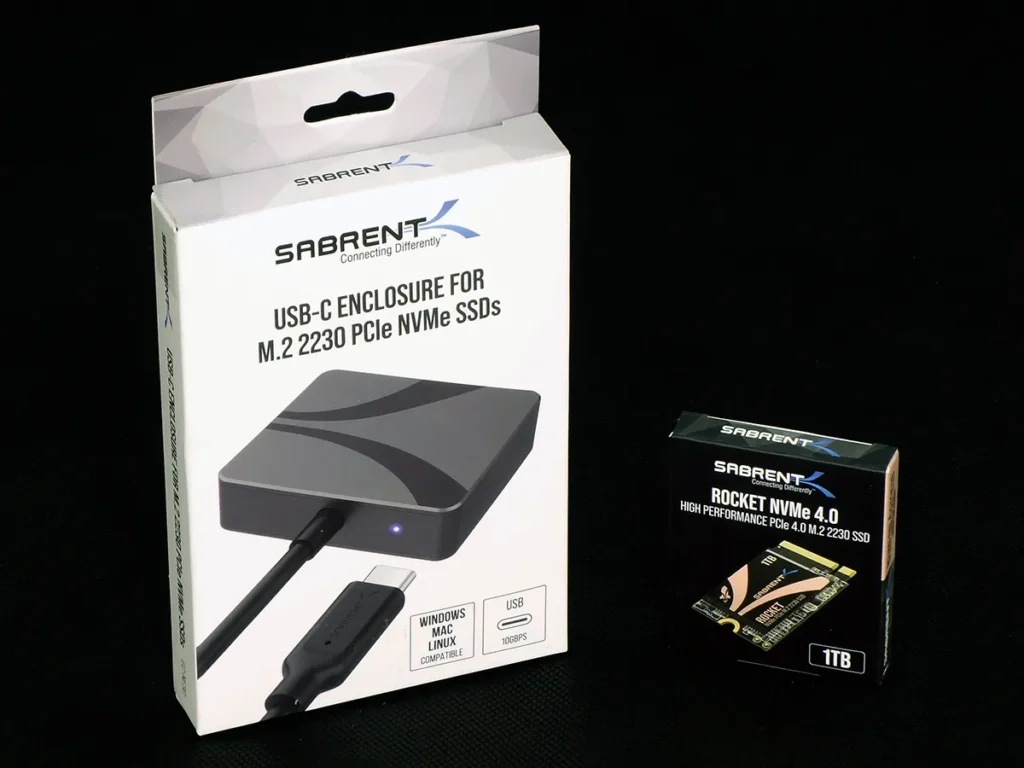Sabrent EC-NE30 NVMe 2230 to USB-C Enclosure Review
Sabrent’s lean on the gaming handheld market got a lot heavier last year when it released a 2TB version of its M.2 2230 drive at the same time as Asus launched its ROG Ally. Brilliant. Of course Sabrent marketing kept its message targeted at the more mature Steam Deck, which opened them to a far larger market since many of those were quickly consuming their entire 512GB of factory-equipped storage. Even a few of the customers who had splashed out for the 1TB version were starting to feel the squeeze.
But as impressive as a Gen4 2TB drive in the tiny 2230 format sounded, our first thought was “what would we do with the old 512GB drive”? These were typically worth $60 at the time, and we don’t like to leave anything on the table. Well, Sabrent finally has an appropriately sized solution.
| Sabrent EC-NE30 | |
| Type | Portable Drive Enclosure |
| Form Factor | M.2 (up to 2230) |
| Internal Interface | NVMe (PCIe 3.0 x2) |
| External Interface | USB3.2 Gen2 (10Gb/s) |
| Dimensions | 49x41x13mm |
| Weight | 36g |
| Cable Removable | No |
| Warranty | 2-years |
| Price | $23 |
At less than 2” square, the EC-NE30 tries to be more pocketable than even the company’s own EC-SNVE and, likely owing to the fact that it doesn’t need to support old SATA M.2 drives, it’s also 25% cheaper. Or maybe it’s the lack of a detachable cable that saves Sabrent enough production cost to enable this smaller enclosure’s lower price?
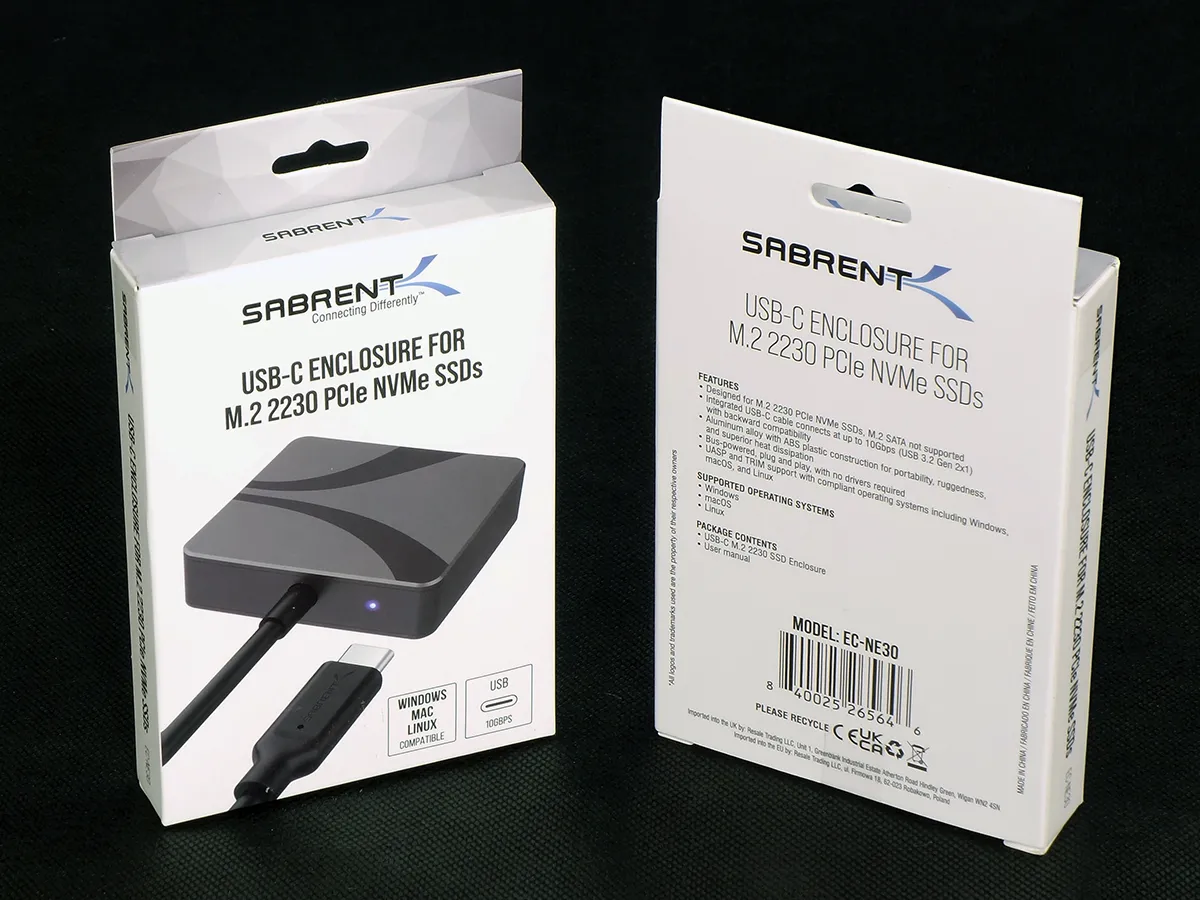

Whlle the package contained a thermal pad and two screws, opening the back of the housing reveals that none of those things were needed: The EC-NE30 uses an internal lever to latch the drive and is factory loaded with a thermal pad, so the extra pad and screws must be spares.
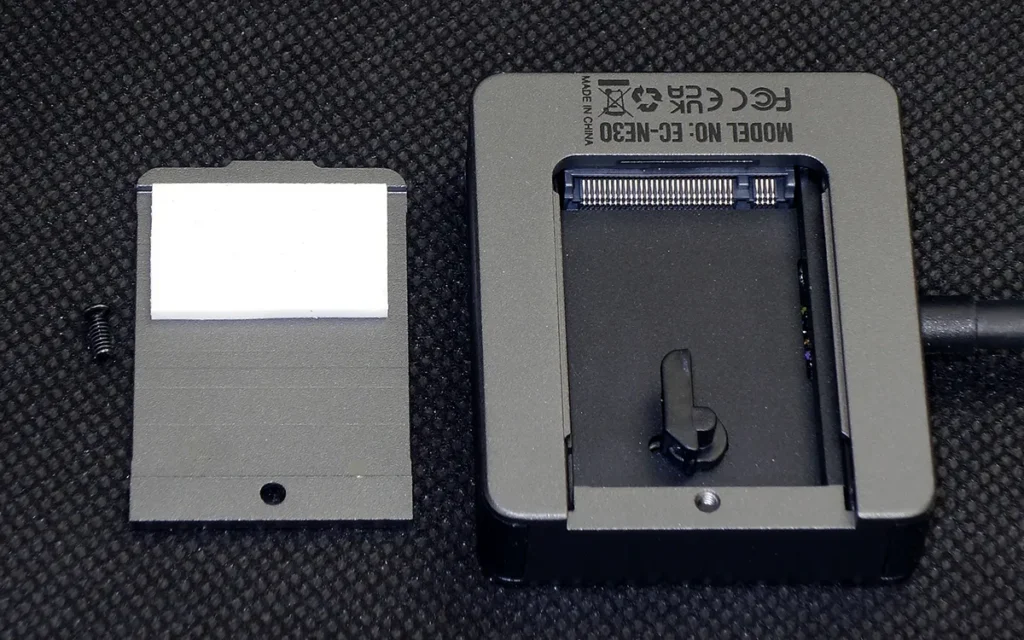
Not finding an easy way to remove the interface card so that we could ID its controller, we instead plugged it into a system to find a JMicron A583 doing the PCIe 3.0 to USB 3.2 Gen2 (x1) conversion. Understanding that we’d need a drive with at least 10Gb/s of continuous transfer capability to test the adapter’s performance potential, Sabrent added its Rocket 2230 NVMe 4.0 1TB drive to our test kit.
| Test Hardware | |
| CPU | AMD Ryzen 9 7950X: 16C/32T 4.5-5.7 GHz, 64MB L3 Cache, Socket AM5 |
| CPU Cooler | Alphacool Core 1 Aurora, VPP655 with Eisbecher D5 150mm, NexXxoS UT60 X-Flow |
| Motherboard | ASRock X670E Taichi, Socket AM5, BIOS 1.28 (07-27-2023) |
| Graphics | Powercolor Red Devil Radeon 6750 XT: 2324-2623MHz GPU, 12GB GDDR6 |
| Memory | Lexar Thor OC DDR5-6000 CL32-38-38-96 1.30V 2x16GB (32GB) |
| System Drive | Crucial T700 Gen5 PCIe w/hs 2.0TB SSD |
Because previous reviews have shown a performance differences between the USB4 (Thunderbolt) controller of our motherboard’s I/O panel and the USB 3.2 Gen2x2interface of its front-panel header, we decided to test the EC-NE30 on boat interfaces. We’re also throwing in native NVMe performance for its SB-2130-1TB test drive, just to verify that the drive isn’t holding back the enclosure’s controller. And, since we’ve previously tested the Orico M2PV-CE on both the USB 3.2 and USB4 controllers of this motherboard, we’re using it as the performance baseline.
Benchmark Results
The single-sided SB-2130-1TB goes from the hottest tested in an open motherboard slot to the coolest tested when connected via a thermal pad to the EC-NE30’s aluminum lid.
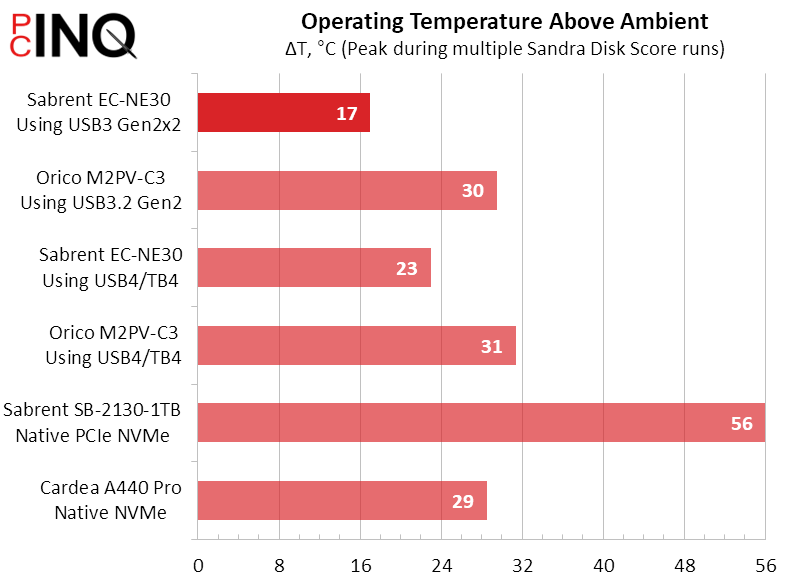
Sandra shows a maximum bandwidth for both drive enclosures of roughly 1GB/s (one gigabyte per second), which would be eight gigabits per second out of ten supposedly available from USB 3.2 Gen2 (x1). Gee, 8Gb/s sounds a lot like the bandwidth of PCIe 3.0 x1, doesn’t it? (Reminder: These controllers are supposed to provide two-lane PCIe 3.0 to one-lane USB 3.2 Gen2).
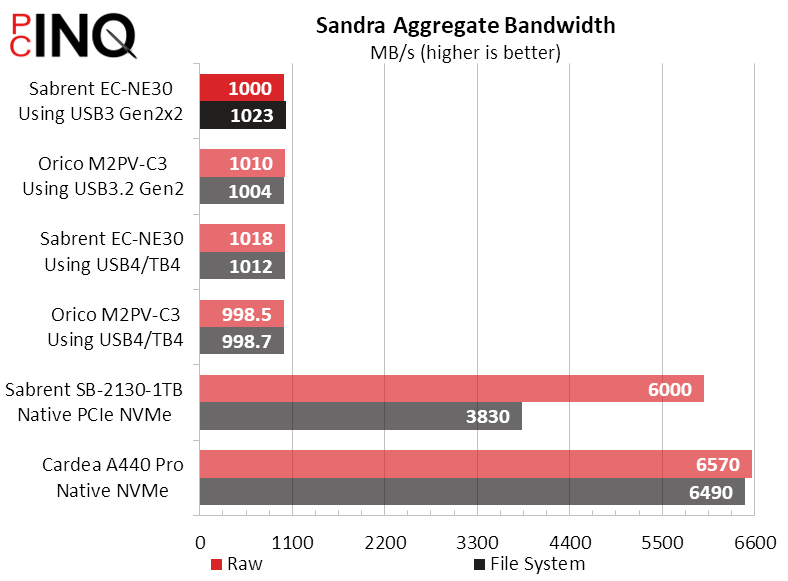

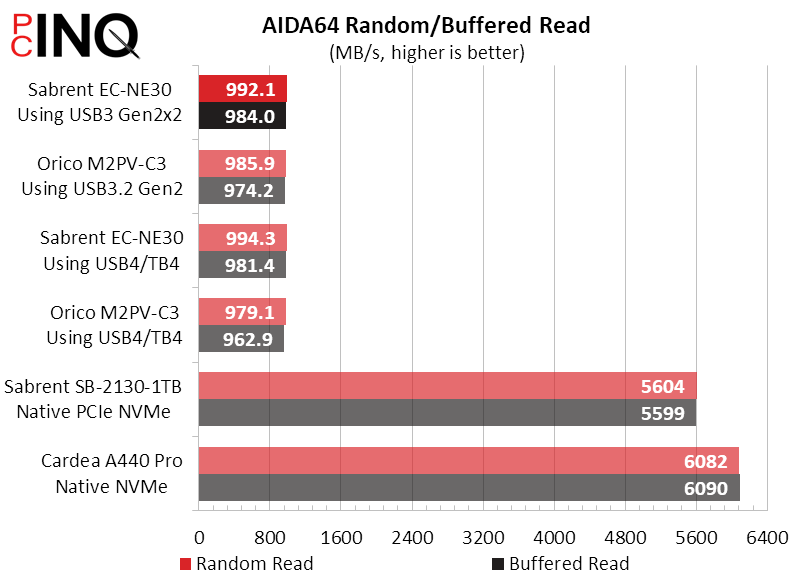

3DMark Storage seems to think that there’s a performance issue with the Sabrent system but PCMark doesn’t: It appears to be thermal throttling, which is something we didn’t see when using the EC-NE30 in apps that didn’t take up the entire screen.
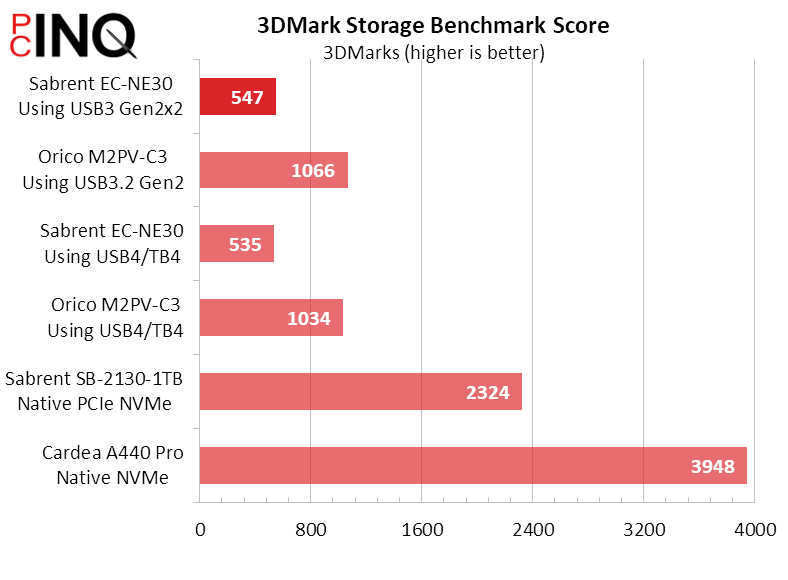
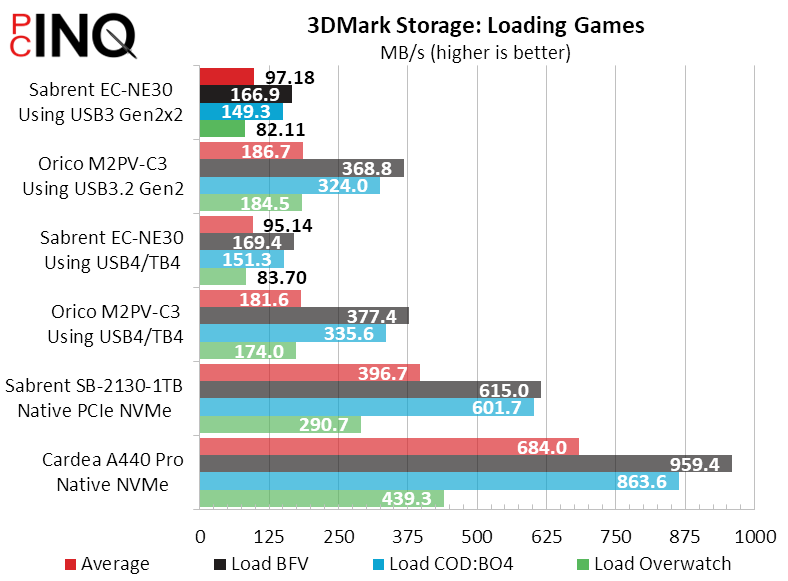
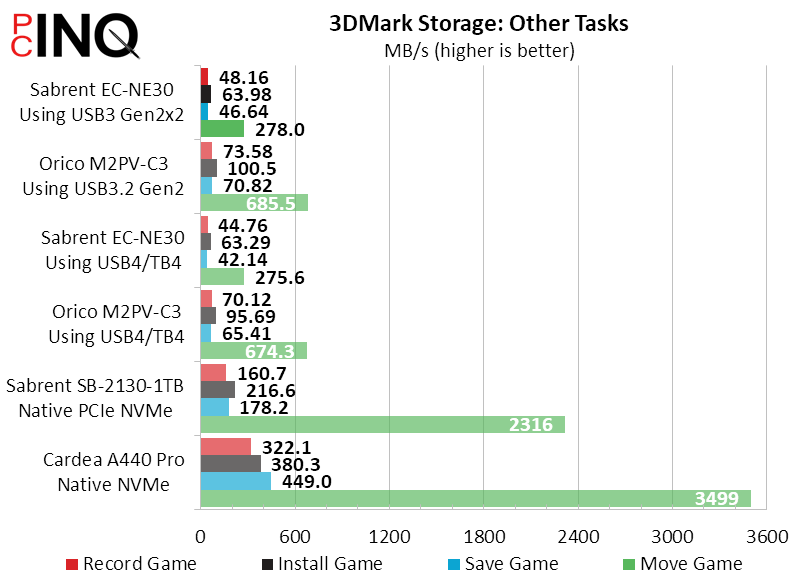

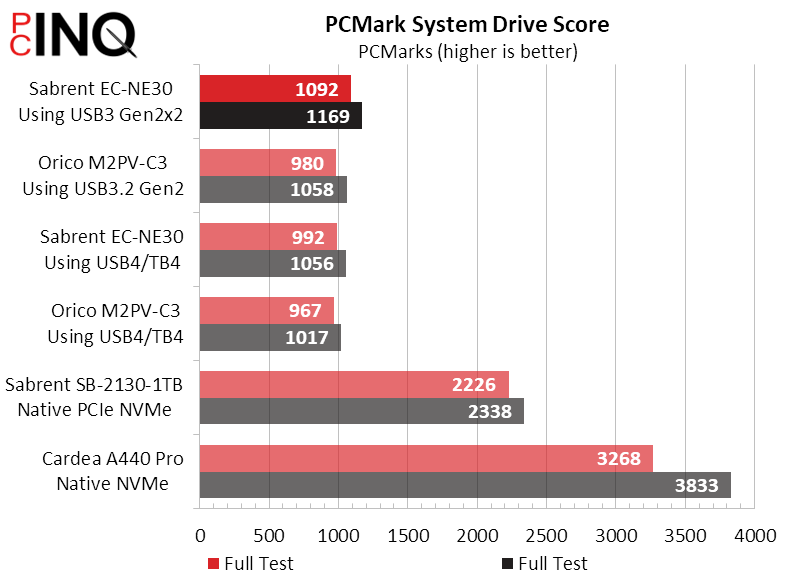

ATTIO IOPs, CrystalDiskMark IOPs, and CrystalDiskMark Latency all show dramatic improvements in the EC-NE30 enclosure for moving from the third-party USB4 controller to the platform-integrated USB 3 Gen2. Yes, it does make sense to us that the Intel Thunderbolt controller responsible for adding USB4 compatibility would add latency.


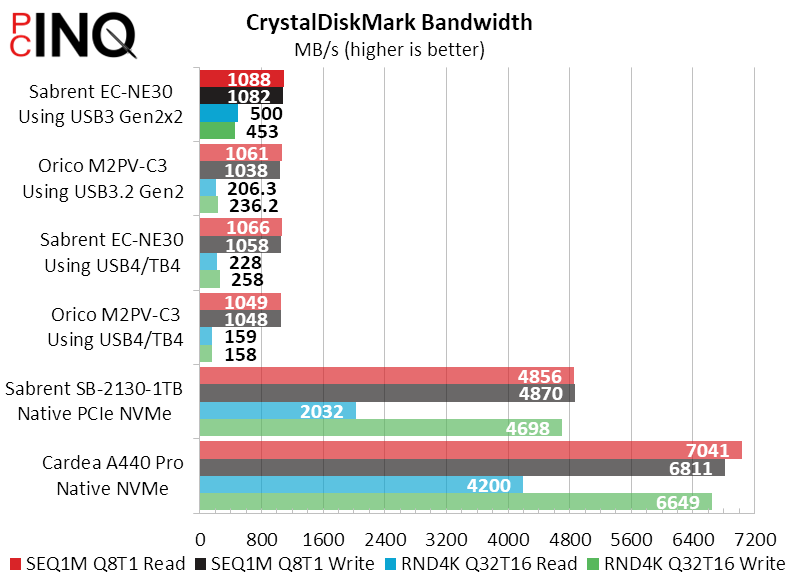
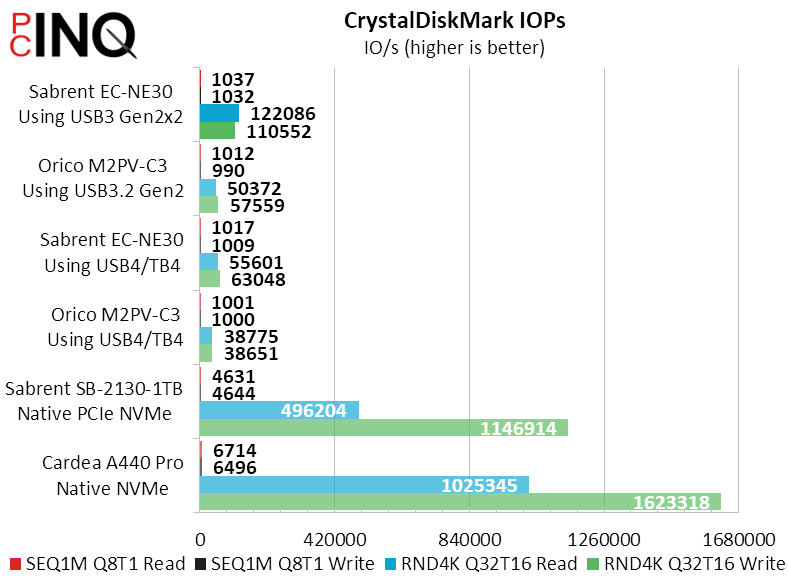

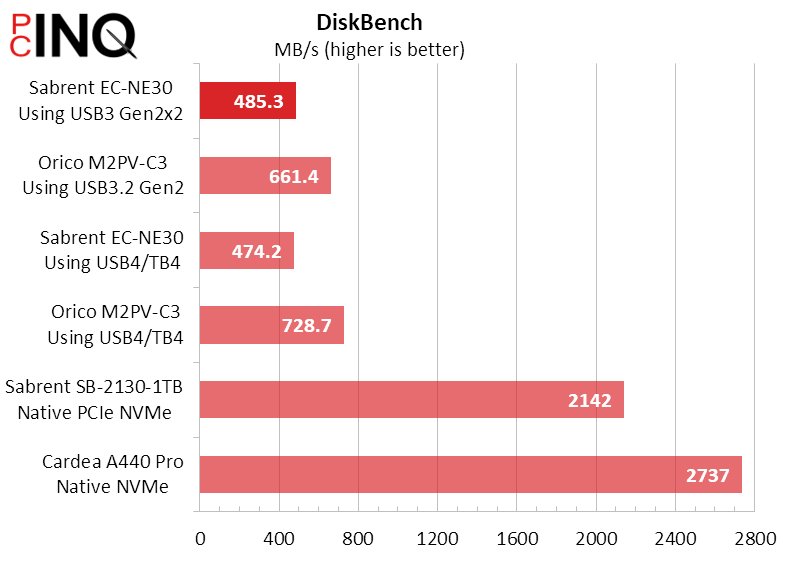
This leads us to an easy summary: The EC-NE30 performs almost as well as our top USB 3.2 Gen2(x1) sample, hindered only slightly by our testing it with a slower 2230 M.2 drive. Since you’re buying this to support an M.2 2230 drive, that particular limitation hardly seems problematic.
| Sabrent EC-NE30 | |
| Pros | Cons |
| Compact Inexpensive | Non-removable cable Not Gen2x2 |
| The Verdict | |
| The EC-NE30 does a great job of repurposing the compact internal drive you upgraded from into a place to move excess files to: We just wish that it would have been Gen2x2. | |
